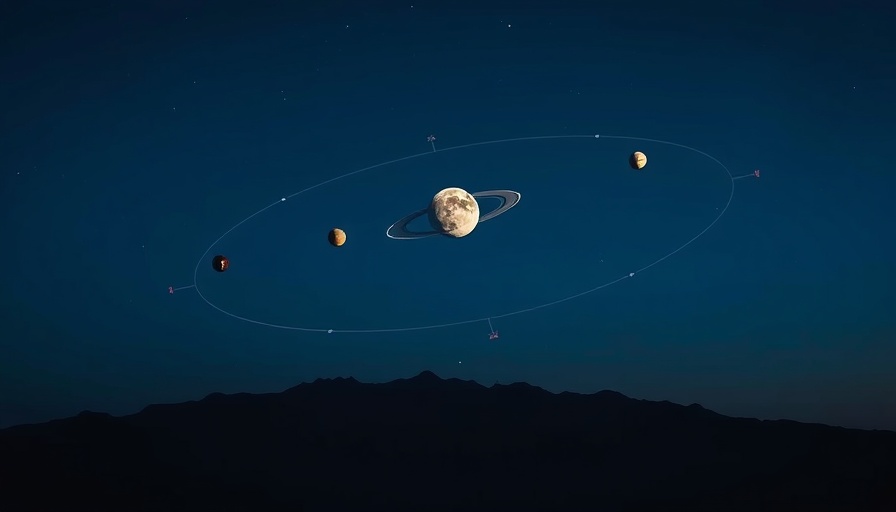
Witness a Celestial Spectacle: The Moon, Saturn, and Neptune
On June 19, stargazers will be treated to a mesmerizing view as the half-lit moon rises alongside the ringed giant Saturn and the dimmer Neptune. This cosmic alignment occurs just hours after the moon reaches its third quarter phase, creating a stunning backdrop for those who venture out during the predawn hours.
Key Timing for Skywatchers
The celestial trio will be at their closest positioning in Earth's sky at 9:11 p.m. EDT on June 18, when they will be just 2.58 degrees apart. For the best viewing experience, early risers should plan to step outside around 1:30 a.m. EDT on June 19 to observe this exciting alignment on the eastern horizon. While the moon will be easily visible, Saturn will shine just below it, brightening the early morning sky.
How to Observe the Planets
Neptune, while more challenging to observe due to its dimness, will be located approximately 1 degree above Saturn. To catch a glimpse of this distant ice giant, a telescope with an aperture of at least 8 inches is recommended. For those equipped with binoculars or telescopes, this presents an excellent opportunity to explore these remarkable features of our solar system.
Why This Event Matters
This celestial event is a rare alignment that not only brings beauty to the night sky but also offers insight into the workings of our solar system. Observing planetary movements can enhance our understanding of celestial mechanics and the universe's vastness. For amateur astronomers and space enthusiasts alike, such events remind us of the beauty of the cosmos and our place within it.
Preparing for Future Stargazing Events
As the moon continues to wax and wane, stargazers should mark their calendars for upcoming celestial phenomena, including the moon’s approach toward Venus later in the month. Similar to this alignment, these moments create opportunities for learning and appreciation of astronomy, allowing individuals to engage with innovative technology as they capture and share images of their observations.
For those excited about exploring the beauty of the cosmos, now is the time to invest in quality observational equipment. Consider the Celestron NexStar 4SE, noted for its ease of use for beginners, to enhance your stargazing adventures.
 Add Row
Add Row  Add
Add 




Write A Comment